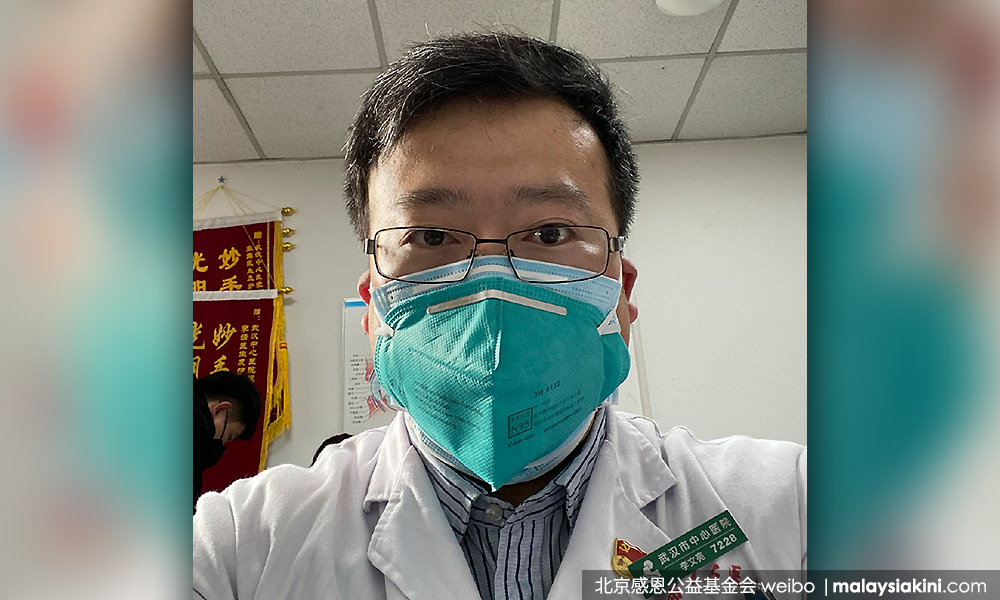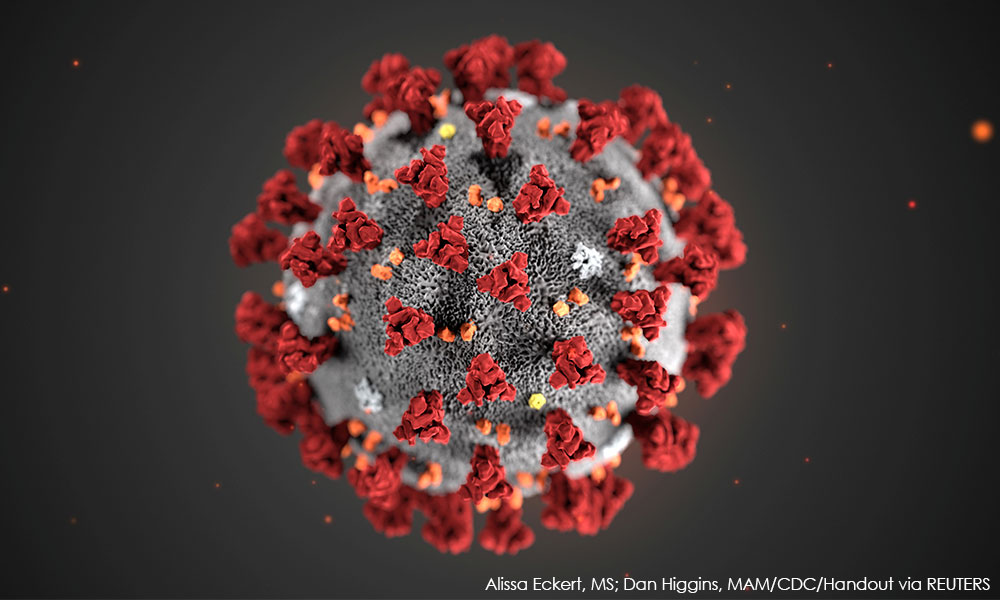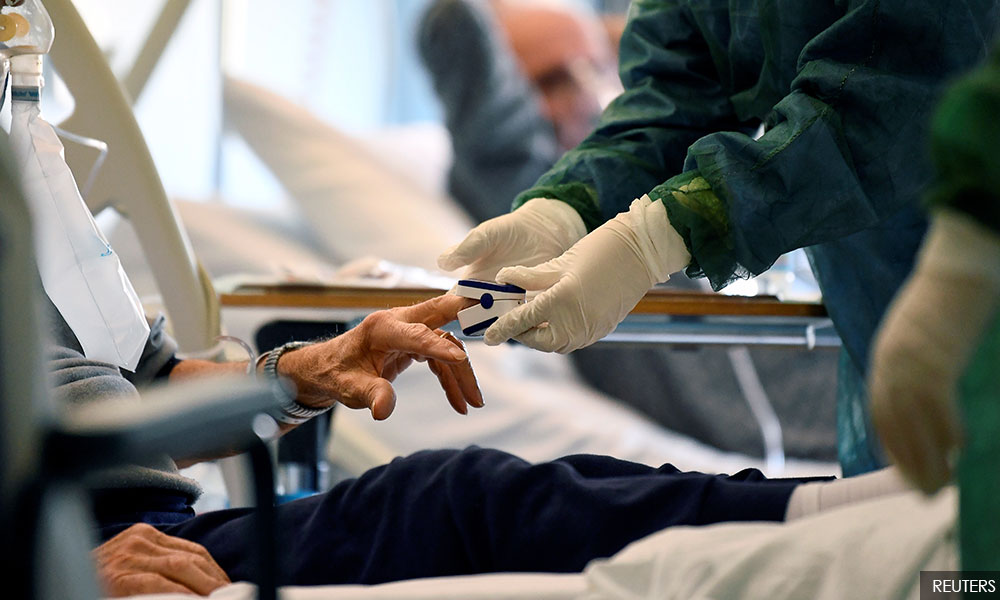COMMENT | Covid-19 is a new pathogen and the medical profession hasn’t fully worked out why exactly it affects some people worse than others.
From data emerging from China, it appears that about a third of persons infected with the virus don’t even show any symptoms. It is still not ascertained whether such asymptomatic individuals can transmit the virus to others.
The clinical spectrum of Covid 19
Of those who develop symptoms, it appears that:
- 80 percent recover without any specific medical treatment. These patients have various intensities of fever, cough, sore throat and body aches, but they generally recover within two weeks of the onset of symptoms. Some of them might have post-infective tiredness that may last for weeks.
- 15 percent develop shortness of breath. Tests might show that the level of oxygen in their blood is diminished. But most of them will feel better with oxygen delivered by nasal prong (FiO2 = 28 percent compared to room air of 21 percent) or ventimasks (FiO2 30 -100 percent depending on the type of mask and the oxygen flow-rate, and whether an O2 reservoir is deployed with the mask). The more serious among them would benefit from ICU management. The time this set of patients takes to recover is usually longer – about four weeks to eight weeks.
- The most seriously affected five percent will go into respiratory failure even with the highest FiO2 that can be delivered by masks. This group will need intubation and ventilation for a few weeks. Sometimes even ventilation does not correct the oxygen deficiency in the blood and the only way to keep them alive is by using the heart-lung machine normally used for open-heart surgery (termed extracorporeal membrane oxygenation). Patient’s blood is drawn from a major vein and passed through the heart-lung machine to pick up oxygen and then is pumped back to a major artery in the patient’s body. This obviously is quite a desperate measure.
Why do some patients fare so badly?
This is a crucial question. If we can get some insight into this, we can try out various strategies to address the factors that make this group of patients so much more ill. We know that older people do worse and so do people with underlying illnesses like heart failure, diabetes etc. That is understandable. But we also have young people succumbing to the virus as well – for example, Dr Li Wenliang (photo), the 33-year-old ophthalmologist who sounded a warning regarding this virus on Dec 30, 2019.

I am not sure if any of the data collected in China, Italy or elsewhere hold answers to this question. But I would speculate that it has to do with the way in which the patient’s immune system responds to the virus.
As you would know, viruses cause disease by taking over our cells and “hijacking” our cell’s mechanisms to produce more copies of themselves. These new virus copies then spread in tissue fluids and through the bloodstream to infect even more cells. Our body fights the infection by producing antibodies that circulate in the blood-stream and in tissue fluids to inactivate any virus found there.
This is essential to prevent the virus from spreading and attacking more cells. The body also produces killer cells that attack and destroy our own cells (in the case of Covid-19, cells in our lungs) that have been taken over (hijacked) by the virus, because these cells have become factories producing thousands of virus particles.
If, for some reason, the immune system was a bit slow in starting off its counter-attack, Covid-19 would have infected many more lungs cells necessitating the destruction of all these cells to eradicate the virus. The other possibility is that for some reason the killer cells produced by the patient are too “trigger happy” and they attack some of the lung cells which are not harbouring the virus, causing the extensive damage that leads to respiratory failure.
This phenomenon of extra damage to tissues because of the activation of the immune system is seen in several bacterial and viral infections. It is well recognised that leprosy patients often develop new nerve lesions in the first month of treatment. They require medicines to modulate the immune response – interestingly Thalidomide is one of the drugs used to treat this reaction.
Chronic Hepatitis B patients often develop a flare-up of their hepatitis and deterioration of liver function when specific anti-viral therapy is commenced. The life-threatening complications of leptospirosis are believed to be due to over-activity of the immune system. And there are many more examples.
There are some clinicians and researchers who speculate that the Covid-19 infection can be divided into two main stages – virological and immunological. In other words, the first week of the infection is characterised by the multiplication of the virus and its spread to more and more lung cells while the developments of the second week are defined by how the patient’s immune system attacks the cells containing the virus.
The clinical significance of these speculations
These speculations have a bearing on treatment strategies. If the rapid spread of the virus in the first few days of the illness (resulting in more cells to be infected) is a major cause of a more serious illness, then measures to damp down this virological phase should be instituted early in the disease. These might include:
- Interferon which is a substance that our body produces to stimulate our own immune system to fight viruses. This could be administered to patients upon diagnosis. Interferon is already being used for the treatment of Hepatitis B. There are news reports saying that Cuba has produced lots of Interferon and are making it available for Covid 19 treatment.
- Anti-HIV drugs. These reduced the mortality of SARS patients by about 85 percent in a retrospective analysis of some clinical data. Liponavir/ritronavir block replication of certain viruses. But are they effective against Covid-19? Various combinations of anti-HIV drugs have been tried out in this Covid-19 epidemic – in China, Thailand, S Korea and Japan. We need to look at all the data to see if any of the combinations used had a beneficial impact.
- There were reports that plasma from recovered patients was used to treat new cases of Covid-19. That would work as the plasma of recovered patients would have high levels of antibodies against the Covid-19 virus. We could collect blood from recovered cases, separate the red blood cells and transfuse those back to the donor, and keep the plasma to treat new Covid-19 cases (of course after screening for HIV, Hepatitis B and C, and other pathogens). This was attempted in Wuhan but did they find it useful? If it wasn’t that beneficial, was it because they were using this modality at the wrong phase of the illness – on the critically ill patients (that is an immunological phase) when ideally this modality would have a maximal impact early in the virological phase of the illness?

If on the other hand, if immunological “exuberance” on the part of the patient’s immune system is a major factor causing a poor outcome, we need to look for ways of toning down the immune system without stopping it from destroying the cells that are really infected.
Chloroquine has been mentioned (even by Donald Trump) as an anti-Covid-19 drug. Apart from being an anti-malarial medicine, chloroquine is also used in the treatment of auto-immune conditions such as rheumatoid arthritis. It is believed to reduce the hyperactivity of the immune system.
What about the other drugs used in auto-immune diseases – there are a whole set of them including steroids, azathioprine, sulfasalazine and many others. I am sure other clinicians in East Asia would have looked at these. What did they find?
Would a treatment strategy focusing on reducing viral spread in week one and toning down immunological response in week two reduce the percentage of patients requiring ventilation? If it did, that would be most welcome as then, we would have fewer desperately ill patients requiring ventilation.
Prognostic markers
We know that 20 percent of patients do not do well and about five percent of them do very badly. So active treatment strategy should be focused on this high-risk group. But how do we identify at the outset itself who are at greater risk apart from age and presence of comorbidities?
Is viral load per cubic millimetre of blood a prognostic factor? Did any country test viral loads of their Covid-19 patients? Was there any correlation to the severity of the disease? But we have to compare viral loads at the same point of the illness, for I think when the immunological phase kicks in, viral loads will be quite low. We need data on viral load on D2 of the clinical illness and see whether this correlates to respiratory impairment, ventilation and death.
How about C-reactive protein? King’s Critical Care Evidence Summary for Clinical Management of Covid-19 mentions that high C reactive protein levels correlate with a worse prognosis. Would Lung CT finding on D3 of the clinical illness gives us a clue as to how severe the infection will turn out to be?
Do our HLA (human leukocyte antigen) genes have anything to do with disease severity? The HLA genes determine the antigens that are expressed on the surfaces of our cells. Is it possible that some HLA antigens mimic the antigens expressed on the surfaces of Covid-19 infected cells? This is wildly speculative but should be considered.
Rheumatic heart disease, which was prevalent in the pre-antibiotic era, is caused when antibodies produced to fight certain species of streptococcus cause collateral damage to heart valves because of some similarity in antigens. Has any treatment centre looked into this possibility? Worth ruling out I would think.

It would be a game-changer if doctors could, on D2 or D3 of diagnosis, identify the subset of patients who have a greater chance of ending up really ill. So developing a set of clinical and lab criteria to risk stratify our patients would enable us to target specific therapy on those at highest risk. Treatment modalities like plasma transfusion will face supply issues. So it would have to be used judiciously.
Let’s not 're-invent the wheel'
There are many clinicians grappling with this new pathogen. Most of them are so caught up in keeping their patients alive that they hardly have any time to review the experience of other centres in their own country as well as in other countries. Shouldn’t we set up a team of doctors to collect and look at all the data of treatment strategies tried by various countries in treating Covid-19 patients?
This research team should also define questions that will help improve prognosticating indicators and treatment strategies. If some of these questions have yet to be answered rigorously, then perhaps some of the necessary data should be generated from patients coming to our hospitals.
There is a need for international collaboration on the development of a good protocol for treating Covid-19 patients. Data should be gathered from the different centres and perhaps trials focusing on some of the unanswered questions should be carried out in treatment centres in the various countries handling Covid-19 cases.
Covid-19 isn’t going to go away for a while. Even if our movement control order succeeds in bringing new cases down to single digits, we will still continue to get clusters of cases from domestic and imported cases from time to time.
This will continue until an effective vaccine is found and made available. Even when that happens, there is a danger that Covid-19 will do what the influenza virus is doing – mutate to strains that the vaccine is ineffective against.
So Covid-19 is going to be with us for some time. We would be much better off if we could learn more about the disease process and fine-tune our management.
In the meantime, stay indoors and keep safe!
Keep up with the latest information on the outbreak in the country with Malaysiakini's free Covid-19 tracker.
DR JEYAKUMAR DEVARAJ is former lung and respiratory specialist at Ipoh GH and chairperson of PSM.
The views expressed here are those of the author/contributor and do not necessarily represent the views of Malaysiakini.

